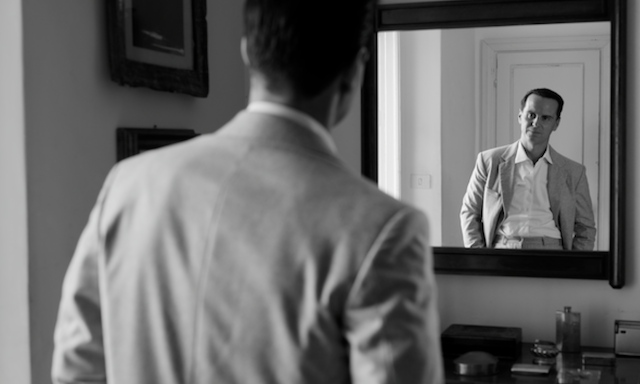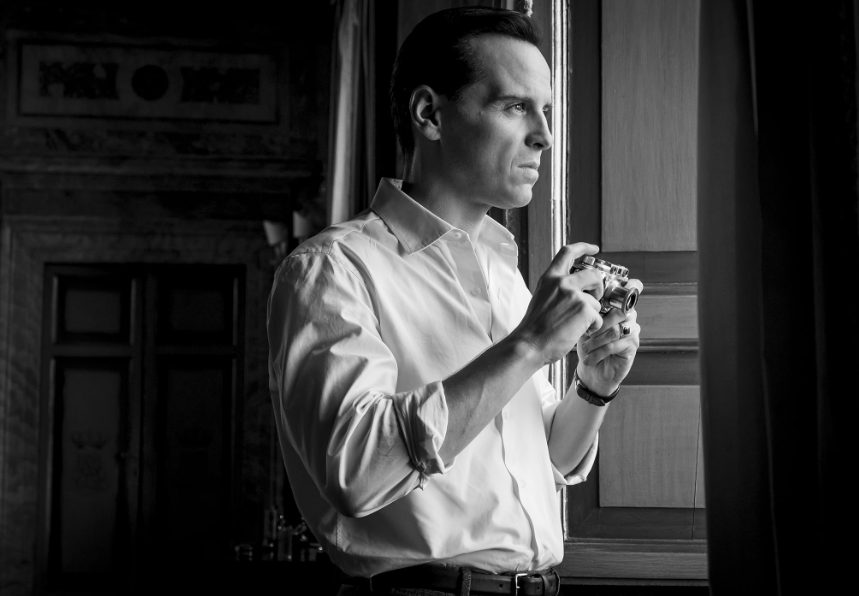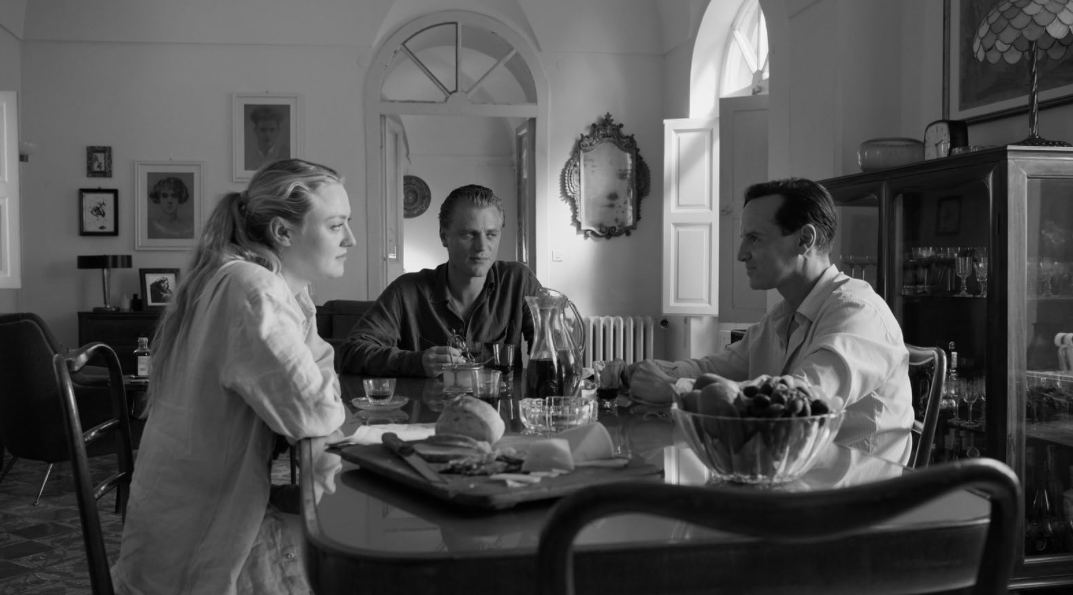
©Courtesy of Netflix, Andrew Scott
Guja Quaranta is an experienced producer of film, theatre, television and advertising, who has taken part as associate producer in the limited Showtime/Netflix series Ripley, written, directed and executive produced by Steven Zaillian.
The titular character of the show first was introduced by writer Patricia Highsmith in her 1955 novel. Since then, it has been adapted numerous times for the screen, including the 1960 Purple Noon, starring Alain Delon, as well as the 1999 The Talented Mr. Ripley, starring Matt Damon. Even Wim Wenders with his 1977 The American Friend and Liliana Cavani with her 2002 Ripley’s Game were seduced by this intricate character. Most recently his story has been revived by the compelling mini series available on Netflix.
Before this project, Guja Quaranta was an associate producer on the feature film The Equalizer 3, which was directed by Antoine Fuqua and starred Denzel Washington for Sony Pictures, and also worked on the Paramount Pictures film Zoolander 2 written, directed by, and starring Ben Stiller. In addition, she handled production duties on the independent film Voice From The Stone with Emilia Clarke and Marton Csokas.
Guja Quaranta is also active in short films and animation. The works she has produced have garnered multiple awards. Her creative instincts, talent relations, and business acumen make her a much-desired producer.

In this Exclusive Interview Guja Quaranta shares her contribution to the making of Ripley:
Q: How did you get involved in the project and how long did it take to shoot the series?
G.Q.: I was called by the Executive Producer Clayton Townsend, with whom I had worked with in the past, to join this project as it was set in Italy. It took us 8 months to prepare and 10 months of shoot!
Q: How was this television series approached in relation to the 1999 film and the 1955 novel?
G.Q.: Steve Zaillian based the series on Patricia Highsmith’s novel. I am pretty sure it was in his mind even before Minghella’s film. Steve never compared his version to any other adaptations, his ideas were always very unique, strong and clear.
Q: Ever since the character came out of Patricia Highsmith’s pen, the field of psychology included Ripley’s Syndrome in its classifications. This version of Tom Ripley reminds of Norman Bates’s pathologies, on what did you base his mental illness?
G.Q.: I do not see Ripley as sick person. Rather, he is a clever, deceitful yet human character. One who assumes another’s identity and gets caught up in immoral acts in the process.

©Courtesy of Netflix, Andrew Scott
Q: The series displays a faithful depiction of Italy that is far from stereotypes and smoothly blends the Italian and American dialogue, through authentic characters that are almost reminiscent of Neorealism. As the daughter of production designer Gianni Quaranta you surely have an eye for the art department. I found this aspect impressive, and was struck by ingenious details such as the Italian newspapers transforming sentences in English for international viewers, to mention one. Did you oversee the “Italianness” of the series, that too often in Hollywood projects turns into a warped cliché?
G.Q.: The production designer David Gropman did an amazing job. I know that David and also Steve know Italy very well so their eye was never that of a tourist’s perspective, but from the view of those who know and love it. Both of them have spent a great deal of time there in the past. I did certainly assist with nuances of culture and also with my views on Italian casting and dialects. Of course I am imprinted and influenced by my father and also my mother (production and costume designer). As I always say I grew up with art and cinema for breakfast and it would have been difficult for me to become a dentist!
Q: Where did filming take place? Were there some studio reconstructions of the locations?
G.Q.: We filmed in New York and all over Italy; Rome, Anzio, Naples, Capri, Atrani, Palermo, Venice. We did build some interiors in Cinecittà but the majority of the show was shot on location. I think this gives the series great production value.
Q: What was Steven Zallian’s vision that you had to pursue as a team?
G.Q.: Steve is very detailed because when he writes he already imagines everything. We tried to give him everything he needed to express his vision. This was an exciting challenge to bring his exact detail together in all areas given the show takes place in 1960 and we were making it some 60 plus years later.
Q: What were the sources of inspiration for this neo-noir style?
G.Q.: Of course the original book series by Patricia Highsmith along with the classic films of Italian cinema of the time such as La Dolce Vita, music by Mina and the memories of the bygone era before globalisation.
Q: History of art, primarily through Caravaggio, plays a significant metaphorical role, how did this intuition come into being?
G.Q.: Steve was fascinated with Caravaggio’s stunning paintings and his dark life. He drew a parallel and wove this throughout the story.
Q: Besides Andrew Scott as Tom Ripley, Johnny Flynn as Dickie Greenleaf, and Dakota Fanning as Marge Sherwood, the cast includes the likes of John Malkovich, Margherita Buy and Eliot Sumner. The latter brings our contemporary era to past decades, since they are non-binary. In you opinion what have these actors added to the characters of the story?
G.Q.: The cast, from Andrew to the smallest character, is so perfect. Steve was very meticulous in casting the right person for every role. I think that Eliot is amazing and brought an unexpected version of Freddie. Also Maurizio Lombardi’s performance as Inspector Ravini is very impressive. John Malkovich’s mysteriously teasing portrayal makes us hope for a future season maybe?

Courtesy of Netflix, Dakota Fanning, Johnny Flynn, Andrew Scott
Q: Classics of literature that have already been adapted into films are now being revived through television series. One of the most awaited projects along these lines is the adaptation of Il Gattopardo (The Leopard). What is your opinion on this Hollywood trend?
G.Q.: I don’t mind it at all. I think every one should have the freedom to make their own version of something they are inspired by.
Q: Without giving any spoilers, the series ends with the possibility of further storytelling. Should we expect a second season?
G.Q.: I really wish!
Q: What other projects are in the pipeline for you?
G.Q.: I am currently in Thailand producing an independent movie directed by Justin Lin entitled Last Days.

